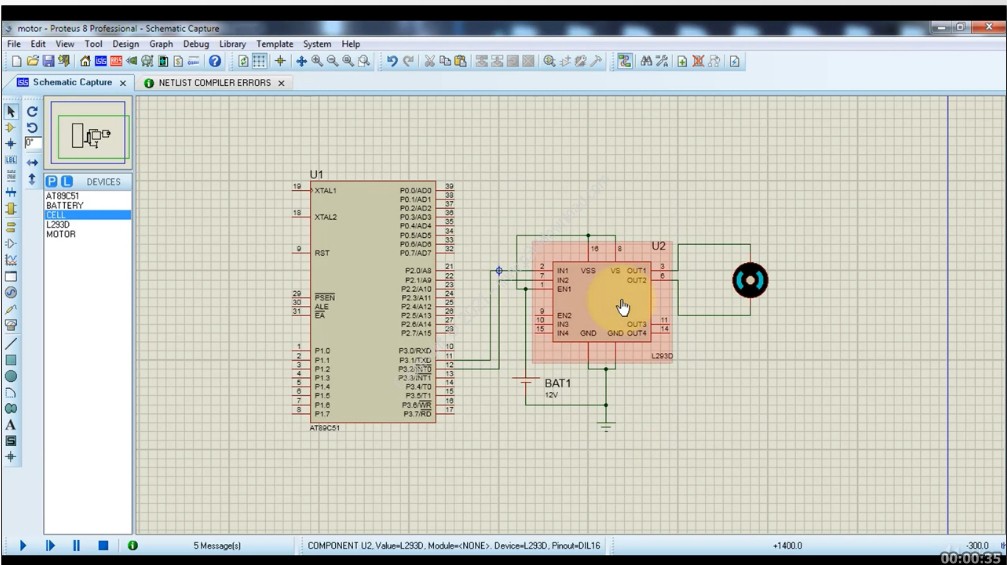
- Uart embedded c program driver#
- Uart embedded c program full#
- Uart embedded c program software#
- Uart embedded c program free#
Do you see a potential implementation challenge with these diagrams? The head and tail are on the same element in two instances: when the buffer is empty and when the buffer is full. Now one more character is added and fills the buffer again, but now the ring wraps around the array.Īnd around and around the data goes.
Uart embedded c program free#
The tail increments and there is one free element in the ring buffer.

So what if the application now reads a character from the ring buffer? If one more write occurs, the oldest data would be lost. Another key is pressed, and another character is entered.Īnd another… oh wait, the ring buffer is full! The head has wrapped around back to the position of the tail. In the next image, one element is added as indicated by the light blue box.ĭata is inserted at the current head, and the head is incremented to the next element. When it is initialized, the head and tail are both at the first element. Let’s say our ring buffer can hold 4 elements. To help clarify this how the ring buffer works, lets take a look at some diagrams. Note these are just naming conventions for the sake of theory – their exact meaning is implementation specific as you will see later. These are commonly referred to the head and tail respectively. The end of the queue contains the oldest data and is where the caller will read from. The start of the queue is where new data will be written to. The start of the queue could begin somewhere in the middle of the array, wrap around the last element back to the beginning and end there. Really it is just implemented as an array but the beginning of the queue does not have to start at the first element of the array, and the end does not necessarily end at the last element in the array.

It is called a ring buffer because data can wrap around back to the beginning, provided there is space. The type of FIFO we will be implementing is called a ring buffer, also known as a circular buffer. In this tutorial we will implement on type FIFO which can be used for queuing all types of data.
Uart embedded c program software#
However, even with hardware queuing, it may be optimal to implement a software queue in conjunction to provide more flexibility. Some higher end MCUs provide a UART FIFO in hardware. The UCA0STAT field will be set if this condition, called an overrun error, occurs. In fact, the UCA0RXBUF register can be considered a FIFO of depth 1 (depth of ‘n’ means ‘n’ elements fits in the FIFO) which drops the oldest data once full. Using a FIFO to queue received data is very common. There are different types of FIFOs so I won’t cover all the possible designs, but we will look at one in detail shortly.
Uart embedded c program full#
If the FIFO is full and there is another piece of data to enter, it is either dropped (the newest data is lost) or the oldest data in the FIFO is pushed out and discarded. A FIFO is a type of buffer (or queue) in which the data enters and exits in the same the order. The solution is twofold: detect incoming data using interrupts rather than polling and then store each received character in a first-in-first out (FIFO) buffer. If the software does not read the data out of the register before the next character is received, the value in the register will be overwritten. What happens here is each character received by the peripheral is placed into the UCA0RXBUF register. You will notice that characters are dropped, only one or two of the characters are echoed back. Try typing ‘1234’ quickly at the menu prompt. Compile the code with this delay and then run it. This delay is exaggerated but it demonstrates an important point. The menu_run function reads the UART input and is then delayed one second before checking for the next character. We can easily simulate this scenario by adding a big delay into the the main loop – say one second – by using the _delay_cyles function.


Once we start adding in more functionality to the main loop, it is possible that characters may be missed because the CPU is busy doing other things. As we learned with the push button back in lesson 6, this is not the optimal solution for most drivers.
Uart embedded c program driver#
In the last lesson, we created a very simple UART driver which polls the peripheral for received data.


 0 kommentar(er)
0 kommentar(er)
